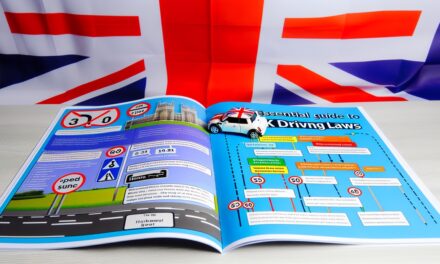Did you know that used car prices have surged by over 30% in the past few years? This unexpected spike has left many scratching their heads, wondering why used cars are so expensive. The used car market isn’t just about finding a cheap ride anymore; it’s a complex web influenced by global supply chain issues, increased demand, and evolving consumer preferences. As new cars become scarce due to production delays, more people turn to pre-owned vehicles, driving up prices. Economic uncertainties and inflation play significant roles in this trend for new car buyers and car customers in the car industry, affecting new car deals. Understanding these dynamics can help potential buyers navigate this costly landscape more effectively. Whether you’re buying or selling, knowing why used cars cost so much can make all the difference in your decision-making process.
Key Takeaways
-
Understand Market Dynamics: Recognise that the used car market is influenced by a complex interplay of supply chain issues, economic conditions, and consumer demand. Stay informed about these factors to better navigate purchasing decisions.
-
Consider Supply Chain Impact: Be aware that disruptions in the supply chain significantly affect used car prices. Monitor industry news for updates on manufacturing and distribution to anticipate price trends.
-
Monitor Economic Indicators: Economic factors such as inflation and interest rates can drive up used car prices. Keep an eye on these indicators to make informed decisions about timing your purchase.
-
Evaluate Vehicle Condition: Thoroughly assess the condition and age of any used vehicle before buying. This evaluation can help avoid unexpected repair costs and ensure value for money.
-
Conduct Thorough Market Research: Investigate market trends and compare prices across different platforms. This research can provide insights into fair pricing and help identify potential deals.
-
Explore Cost-Effective Strategies: Consider strategies such as negotiating with sellers or exploring alternative financing options to mitigate high costs. Being strategic in your approach can lead to more affordable purchases.
Understanding the Used Car Market
Current Trends
The used car market has seen significant changes in recent years. Car demand has increased due to economic uncertainty and supply chain disruptions. Many buyers now prefer used cars over new ones for affordability.
Another trend is the rise of online platforms for car shopping. Websites and apps have made it easier for buyers to compare prices. This transparency has affected used car prices, making them more competitive.
Role of Dealerships
Used car dealers play a crucial role in the market. They provide a wide range of options for car buyers. Some dealerships offer certified pre-owned vehicles, which come with warranties.
Private sellers also influence the market. They often sell cars at lower prices than dealerships. However, buying from private sellers can be risky without proper checks.
Differentiating Factors
Several factors differentiate the used car market from the new car market. Car production issues have impacted new car availability, increasing demand for used cars. New car sales rely heavily on promotions and financing deals, unlike used cars.
Used car values fluctuate based on various aspects like mileage and condition. New cars depreciate quickly once purchased, but used cars hold their value better over time.
Economic Influences
Economic factors significantly affect the used car market. Inflation and interest rates can impact car prices and buyer decisions. Higher interest rates make loans more expensive, affecting affordability.
Fuel prices also play a role in shaping consumer preferences. Buyers may choose fuel-efficient models when petrol prices are high.
Technological Impact
Technology has transformed how consumers approach car buying. Online reviews and forums help buyers make informed decisions. Digital tools allow potential buyers to inspect vehicle histories before purchasing.
Virtual showrooms enable customers to view cars remotely, enhancing convenience. These advancements have changed how both new and used car markets operate.
Consumer Preferences
Consumer preferences continue to evolve in the used car market. Environmental concerns lead some buyers to opt for hybrid or electric vehicles. Others prioritise safety features and reliability over aesthetics.
Brand loyalty influences purchasing decisions too. Some buyers stick to brands they trust due to past experiences or reputation.
Factors Driving Price Increases
Global Events
The semiconductor shortage has significantly impacted used car prices. Semiconductors are crucial in modern vehicles for various functions. Global supply chain disruptions have led to a scarcity of these components. This shortage began around 2020, exacerbated by the pandemic. Car manufacturers faced delays in production, causing a ripple effect on the availability of new cars.
As new car production slowed, the demand for used cars surged. Consumers turned to second-hand options due to limited new vehicle stock. This increased demand pushed prices higher. The semiconductor crisis is not expected to resolve fully until 2024, keeping pressure on the used car market.
Production Costs
Increased production costs have also contributed to rising used car prices. Manufacturing expenses have grown due to several factors:
- High petrol prices have driven up transportation costs.
- Raw material costs have increased, affecting the overall production budget.
- Labour shortages and wage increases have further strained budgets.
These factors lead manufacturers to raise prices for new cars, indirectly affecting used car values. As new cars become more expensive, consumers seek affordable alternatives in the used market, driving up demand and prices.
Consumer Behaviour
Consumer behaviour during economic uncertainty plays a vital role in price dynamics. In times of financial instability, people often delay purchasing new vehicles. They prefer buying reliable used cars instead. This shift in preference boosts demand for second-hand vehicles.
Economic uncertainty can arise from various sources:
- Global pandemics like COVID-19
- Political instability
- Recessions or economic downturns
During such periods, consumers become cautious with their spending. They prioritise essential purchases over luxury items, impacting the automotive sector significantly. The preference for used cars grows as a practical choice, leading to price hikes.
Impact of Supply Chain Issues
Disruptions in Supply
Supply chain disruptions have significantly affected the availability of new cars. Since 2020, the automotive industry has faced numerous challenges. The COVID-19 pandemic caused factory shutdowns globally. This led to a sharp decrease in vehicle production. Manufacturers struggled to obtain essential components like semiconductors. These chips are crucial for modern vehicles’ electronic systems.
The shortage of semiconductors has been particularly impactful. New car production slowed down considerably as a result. Factories could not meet the demand due to this bottleneck. Consequently, fewer new cars reached dealerships. This scarcity pushed consumers towards the used car market.
Manufacturing Delays
Manufacturing delays have had a cascading effect on the used car market. As new car availability decreased, consumers turned to second-hand options. This surge in demand increased competition for available used vehicles. Prices began to rise as buyers bid against each other.
The delay in new car production also affected leasing cycles. Many people extended their leases due to the lack of new cars. This reduced the number of lease returns entering the used market. Fewer lease returns meant even less supply, further driving up prices.
Logistics Challenges
Logistics and transportation challenges have exacerbated supply issues. The global shipping industry faced disruptions during the pandemic. Ports experienced congestion and delays, affecting vehicle transport.
Transporting cars from factories to dealerships became more difficult. Shipping costs increased due to these logistical hurdles. Higher costs were passed down to consumers, impacting both new and used car prices.
There were labour shortages within the transportation sector. Fewer drivers meant slower deliveries and longer waiting times for vehicles. These factors contributed to further strain on supply chains.
Market Dynamics
The combination of these factors created significant market dynamics. Reduced new car availability shifted consumer focus to used cars. Increased demand led to higher prices across the board.
Dealerships struggled to maintain inventory levels due to these pressures. Many had fewer cars on their lots than usual, creating a competitive environment for buyers.
e consumers delayed purchasing altogether, hoping for price drops in the future. However, with ongoing supply chain issues, prices remained high.
Economic Influences on Pricing
Inflationary Pressures
Inflation has significantly impacted the automotive sector. Over recent years, inflation rates have risen in many countries. This rise has led to increased costs for materials and labour. As a result, car manufacturers face higher production expenses. These expenses are often passed on to consumers, causing a rise in used car prices.
The cost of living has escalated due to inflation. People now need more money for everyday expenses. This situation limits their ability to buy new cars, increasing demand for used vehicles.
Interest Rates Impact
Interest rates play a crucial role in car financing. When interest rates are low, borrowing money becomes cheaper. Consumers find it easier to finance car purchases. However, when interest rates rise, financing becomes costly. This change can deter people from buying new cars.
Higher interest rates also affect monthly payment plans. Buyers might prefer used cars as they usually require smaller loans. Consequently, reasonable prices for used cars become less common due to increased demand.
Economic Recovery Phases
The phases of economic recovery influence used car price trends. During a recession, people tend to hold onto their vehicles longer. They avoid large expenditures like buying new cars. As the economy starts recovering, consumer confidence improves.
This improvement often leads to an increase in vehicle purchases. New car sales might initially spike, but soon after, the second-hand market sees growth too. The correlation between these recovery phases and price trends is evident.
During the early stages of recovery, the availability of used cars may be limited. This limitation results from previous low turnover during the recession phase. Hence, ev prices and other used car values can remain high until supply stabilises.
EV Marketplace Influence
The electric vehicle (EV) marketplace also affects used car pricing dynamics. As more consumers turn towards eco-friendly options, traditional petrol and diesel vehicles see fluctuating demand. The growing popularity of EVs has led to changes in the second-hand market.
Used electric vehicles sometimes retain value better than conventional cars. This retention is due to technological advancements and increasing environmental awareness among buyers. The shift towards EVs also influences how quickly older models depreciate.
Role of Consumer Demand
Vehicle Preferences
Consumer preferences for specific vehicle types can significantly affect market prices. Over recent years, there has been a noticeable shift towards SUVs and trucks. These vehicles are preferred due to their size and versatility. As more buyers favour these types, the demand for them increases. This higher demand leads to increased prices in the used car market.
Interestingly, fuel efficiency remains a priority for many buyers. Cars with better mileage often see higher demand. This is particularly true during periods of rising fuel costs. Consequently, used cars with efficient engines tend to command higher prices.
Demographic Shifts
Demographic changes also play a crucial role in shaping consumer demand. An ageing population might prefer smaller, easier-to-handle vehicles. Conversely, younger families may seek larger cars or SUVs for space and safety. These demographic trends can lead to fluctuating demands for different car types.
Urbanisation impacts used car prices too. People moving to cities often opt for compact cars due to limited parking space. Such shifts in living arrangements can drive up the prices of smaller vehicles in urban areas.
Lifestyle Changes
Lifestyle changes have also influenced purchasing decisions in the used car market. The rise of remote work has altered how people view commuting and transportation needs. Many now prioritise comfort and technology over performance when choosing a vehicle.
Remote work reduces daily commuting, leading some individuals to sell their second car. However, others might invest in a more comfortable or tech-savvy vehicle since they spend less on fuel. These changing priorities affect which cars are in high demand and thus their pricing.
Economic Context
The preceding section discussed economic influences on pricing, which ties closely with consumer demand. Uncertain economic conditions often lead consumers to opt for used cars instead of new ones, increasing demand further. During economic downturns, affordability becomes a key factor driving purchasing decisions.
In contrast, strong economic growth can lead to increased disposable income and a shift back to new car purchases. This can temporarily ease the pressure on used car prices as demand stabilises.
Evaluating Vehicle Condition and Age
Old Cars
Old cars often attract buyers due to their affordability compared to new models. However, the condition and mileage of these vehicles play a crucial role in determining their value. Buyers should inspect the exterior for rust or damage. The engine’s health is also vital. High mileage can indicate extensive wear and tear, affecting performance.
Maintenance records provide insight into the car’s history. Regular servicing suggests good upkeep, which can maintain value. Conversely, a lack of records may signal neglect, leading to costly repairs. Vehicle history reports reveal past accidents or major repairs, impacting price.
New EV Growth
The rise of electric vehicles (EVs) has influenced used car prices. Technological advancements in new models lead to faster depreciation rates for older cars. As newer EVs hit the market, they feature improved battery life and efficiency. This progress makes older models less desirable.
Depreciation impacts pricing significantly. A car with outdated technology depreciates quicker than one with modern features. Buyers often prefer newer technology for better performance and fuel efficiency. This preference affects the resale value of older vehicles.
Maintenance Records
Maintenance records are essential when evaluating a used car’s price. They offer proof of regular servicing and repairs. Detailed records include oil changes, brake checks, and tyre rotations. These ensure the vehicle remains in top condition.
A well-maintained car retains its value longer. It is less likely to have hidden issues that could lead to expensive fixes. Conversely, missing records can decrease buyer confidence, reducing the car’s market value.
Vehicle History
Vehicle history reports are critical in assessing a used car’s worth. They provide information on past ownership, accident history, and any reported thefts. A clean history increases a car’s desirability and price.
Accidents can cause significant damage, even if repaired professionally. Such incidents may affect the vehicle’s structural integrity or safety features. Buyers should be cautious of cars with multiple accidents listed in their history report.
Importance of Market Research
Thorough Research
Thorough market research is crucial before buying a used car. It helps avoid overpaying and ensures a sound investment. Buyers should look into the current market trends. This includes understanding supply and demand dynamics, which directly influence prices.
The COVID-19 pandemic led to a global semiconductor shortage starting in 2020. This affected new car production and increased demand for used cars. Prices soared as a result. Staying informed about such events can guide better purchasing decisions.
Reliable Sources
Finding reliable sources of information is essential for understanding market trends and pricing. Websites like Auto Trader and Parkers provide comprehensive data. They offer insights into average prices, vehicle depreciation rates, and more.
Industry reports from trusted organisations such as the Society of Motor Manufacturers and Traders (SMMT) also offer valuable information. These reports often include detailed analyses of market conditions. They help buyers make informed choices.
Price Comparison
Comparing prices across different platforms and regions is important for ensuring fair deals. Online marketplaces like eBay Motors and Gumtree allow users to compare listings easily. Buyers can filter results based on location, mileage, and other factors.
It’s also wise to check local dealerships’ offers. Prices may vary significantly between urban and rural areas due to differing demand levels. A thorough comparison helps identify the best bargains available.
Avoiding Pitfalls
Market research helps avoid common pitfalls when purchasing used cars. Some sellers inflate prices by taking advantage of uninformed buyers. Being aware of the going rate for specific makes and models prevents overpaying.
Buyers should remain cautious about deals that seem too good to be true. Scams are prevalent in the used car market. Verifying vehicle history through services like HPI Check can prevent fraudulent purchases.
Emotional Considerations
Emotions often play a role in car buying decisions. People might rush into purchases due to excitement or pressure from sales tactics. Conducting thorough research provides confidence in decision-making.
A well-informed buyer is less likely to experience regret after purchase. Taking time to evaluate options reduces impulsive buying tendencies. It leads to more satisfaction with the chosen vehicle.
Strategies for Cost-Effective Buying
Negotiating Tactics
Negotiating can significantly reduce the cost of a used car. Start by researching the car’s market value. This provides a baseline for discussions. Be clear about your budget and stick to it during negotiations. Dealers often mark up prices, so assertively ask for a discount or better terms.
Consider pointing out any minor issues with the vehicle as leverage. These could include cosmetic flaws or minor repairs needed. Sellers may lower the price if they believe these are deal-breakers.
Certified Pre-Owned Vehicles
Certified pre-owned (CPO) vehicles offer excellent value and assurance. These cars undergo rigorous inspections and come with extended warranties. They provide peace of mind, as they have been thoroughly checked by professionals.
CPO vehicles often include additional benefits such as roadside assistance and special financing options. While they might be slightly more expensive than non-certified used cars, the added security and reduced risk make them worthwhile investments.
Timing Purchases
Timing your purchase strategically can lead to significant savings. Buying during off-peak seasons, such as winter, can be advantageous. Dealers may offer better deals to clear inventory during slower sales periods.
Sales events also present good opportunities for discounts. Look out for year-end clearance sales or holiday promotions. During these times, dealerships are eager to meet their sales targets, making them more willing to negotiate on price.
Exploring Good EV Deals
Electric vehicles (EVs) are becoming more popular in the used car market. Many consumers are trading in their older models for newer versions, creating opportunities for buyers. Good EV deals can sometimes be found if you know where to look.
Check online marketplaces and dealership websites regularly for offers on used EVs. Keep an eye out for incentives or rebates that might apply to electric vehicles in your area. These can further reduce the overall cost of purchasing an EV.
Final Remarks
Used cars are pricey, and it’s no surprise why. With supply chain hiccups and economic ups and downs, prices have shot up. Add in the rising consumer demand and you’ve got a perfect storm driving costs sky-high. It’s crucial you dig deep into market research and evaluate conditions to snag the best deal.
hat’s the game plan? Arm yourselves with knowledge and savvy strategies for cost-effective buying. Don’t just settle for any old banger; make sure it ticks all your boxes. Keep your eyes peeled for deals and trust your instincts. Remember, staying sharp in this market is key to getting your money’s worth. Ready to dive in? Get cracking on your research now, and drive away with confidence!
Frequently Asked Questions
Why are used car prices rising?
Used car prices are rising due to limited supply and high demand. Supply chain disruptions have reduced new car availability, pushing more buyers towards used cars. This increased demand results in higher prices.
How do supply chain issues affect used car prices?
Supply chain disruptions lead to fewer new cars being produced. This scarcity increases demand for used cars, driving their prices up as consumers seek alternatives.
What economic factors influence used car pricing?
Inflation, interest rates, and consumer confidence impact used car pricing. Economic uncertainty can boost demand for affordable vehicles, raising prices as more people opt for used cars over new ones.
How does consumer demand affect used car prices?
High consumer demand for reliable and affordable transport increases competition in the used car market. More buyers vying for fewer available vehicles result in higher prices.
Why is evaluating vehicle condition important when buying used cars?
Evaluating a vehicle’s condition ensures you get value for money. A well-maintained car may cost more upfront but saves on future repairs, making it a smarter investment.
How can market research help in buying a used car cost-effectively?
Market research helps identify fair pricing and available deals. By comparing prices across different platforms, you can negotiate better and avoid overpaying.
What strategies can save money when buying a used car?
Consider certified pre-owned vehicles, buy during off-peak seasons, or explore private sales. Negotiating effectively and securing financing beforehand can also reduce costs.





